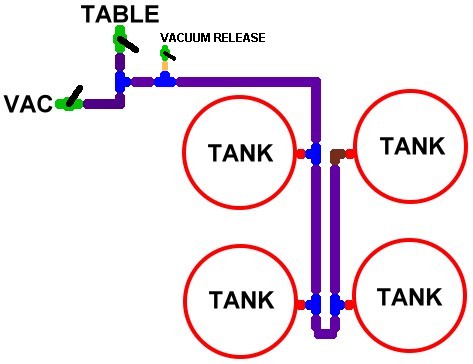OK, Do you think home wiring, would run a 4ft x 4ft machine?
Kind of a crap shot answer, but I'm going to say 'maybe' but I wouldn't recommend it in most instances...
Every house is going to differ depending on what kind of service is supplied to the house... That will vary by building codes, build date and what not...
As I said previous my 2x4 table requires 50 Amps @ 220 volts, so to simplify things you are likely looking at 100 Amps @ 220 volts to run a 4x4 table heater... As I said in my area older houses only have 60 Amp service panels, so you can't pull 100 Amps from them without doing dangerous things like bypassing the service panel... Most new construction in my area has 100-200 Amp service depending on the size of the house...
With that said if you have 150-200 Amp service yeah you could wire in two 50A circuits to run the heater... Although with say 100 Amps service or less it 'could' work but IMO it's dangerous as you are taxing the entire system to it's limits... Even turning on a single light bulb in the house would in theory push you over the limit...
100 Amps @ 220 is A LOT of juice for residential hookups, there is certainly enough juice on the poll outside and likely the wires from the poll to the house, but from the service panel into the house is where you encounter issues...
My honest advice is to consult a local electrician that can evaluate the house and either upgrade the service or tell you that you have enough already...
Commercial, especially in industrial parks or what not should not have any issues beyond wiring up two 50 Amp plugs to run the thing...
As for thickness and depth of pulls that is one factor but as you implied so it distance to the edge or next part... Also the thicker you go the less detail you have and the harder it is to pull and heat... A fire hydrant shouldn't be an issue doing two sides...
As for plaster bucks they will wear out, a real hydrant would certainly outlast plaster... Pros and cons of both choices, as well as creating metal filed resin shelled bucks backed by a lighter weight material like a fluffed plaster, or even embedded wood... Plaster is certainly cheap, and will work but it has a shorter life than other methods...

